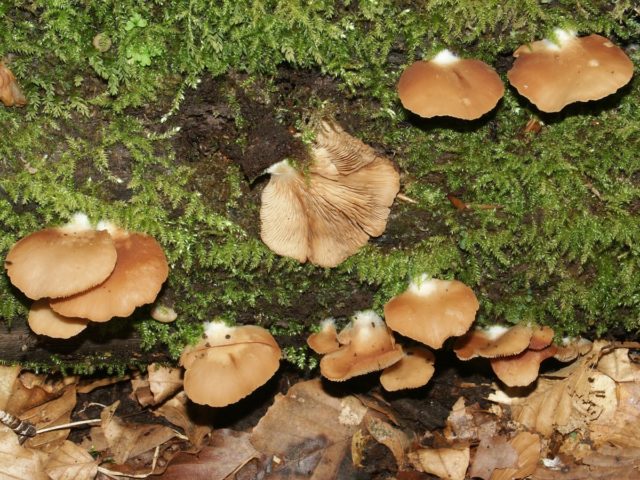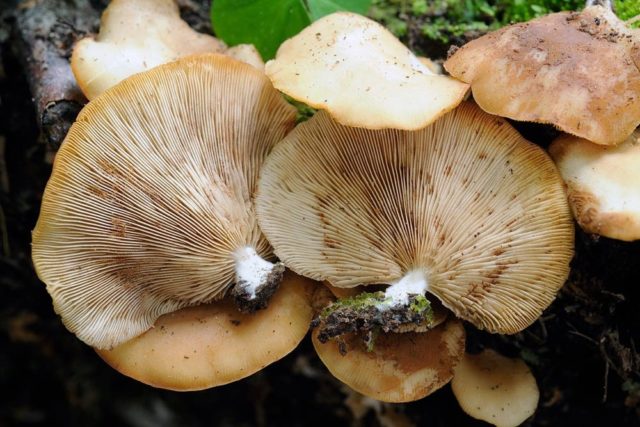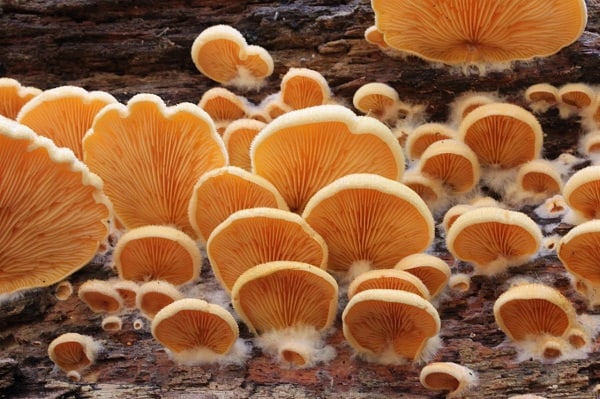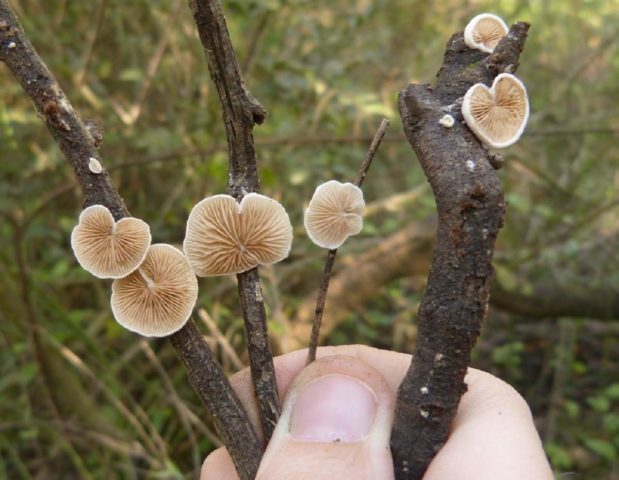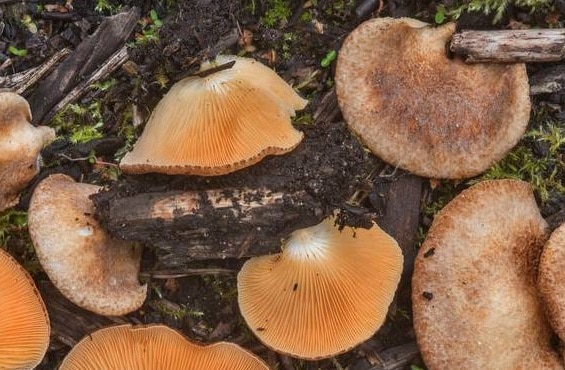Content
Soft crepidote is widespread in Russia and is often found on dead wood. Sometimes it infects living tissues of deciduous trees. Known among scientists as chestnut crepidotus, Crepidotus mollis.
The mushroom belongs to the Fiber family.
What soft crepidota look like
The sessile cap is reniform at first, from 5 mm. Then it opens, becomes fan-shaped, 5-6 cm in diameter. The hem is wavy, tucked in, furrowed in old specimens. Under the smooth skin, like a gel filling. Color from whitish-cream to dark ocher, yellowish or light brown, chestnut shades.
Narrow, forked plates fan out from the rudimentary stem, sometimes they can be branched. Densely growing plates, adherent to an inconspicuous stem or free-standing. Initially light fawn, then brownish. Mass of buffy spores. The fine pulp has no smell, the taste is pleasant. The peduncle is visible as a small lateral tubercle.
Where soft crepidota grow
Like all members of the genus, the mild species is widespread in Eurasia in the temperate zone, in Africa and South America. It is often found in Russia. Found in the deciduous forests of the Volga region. It also lives on coniferous dead wood and on the affected areas of living trees. Most often, soft crepidot grows on linden, aspen and other deciduous species. Fruiting bodies are collected in groups. Fruiting from mid-summer to October. Spores can also grow on treated wood. Sometimes crepidote soft is found in the hollows of living trees.
Is it possible to eat soft crepidota
Almost no scientific research has been carried out on the soft species of the Fiber family. Sometimes in the literature there is information that the fruit bodies are inedible. Most scientists classify the mushroom as conditionally edible, of low nutritional value, in terms of quality it belongs to category 4. No toxic compounds have been identified in the fruiting body, but they are used only in extreme cases.
False doubles
Soft crepidote is interesting only for amateur naturalists who identify the types of mushrooms and find it by its relatively large size and gel-like surface. In external structure or color, they are a bit like soft crepidot:
- oyster mushroom orange or nest;
- crepidote changeable;
- crepidote saffron-lamellar.
Orange oyster mushroom belongs to the fourth nutritional category. It is distinguished by a bright color of the skin - orange in various variations of the palette. The flesh of young oyster mushrooms smells like melon, and old caps give off an unpleasant smell, similar to rotten cabbage.
The variable species has very small caps, up to 3 cm, with uneven plates - at first whitish, and then creamy brown. Spore mass of tobacco-brown hue. Fruit bodies are free of toxins, but are not considered a good food product due to their small size.
Saffron-lamellar woody mushrooms differ from the soft appearance in that the cap looks like it is covered with scales.
Use
Before using, the caps must be boiled for 10-20 minutes, and then fried. Soft large fruiting bodies are dried, young are pickled.
When eating conditionally edible mushrooms, it must be remembered that such dishes are not recommended in large quantities. The gifts of the forest are digested and absorbed by the body for a long time due to the high content of chitin.
Conclusion
Soft crepidote is a conditionally edible species, widespread. With an abundance of other mushrooms, it is better to refrain from harvesting it.
